by Adreon Hubbard
A walk or bike ride through Towson’s many charming neighborhoods makes a tree-lover really happy. So many yards are filled with trees, shrubs, and herbaceous plants, in addition to the more traditional mowed grassy areas. This past fall, more than 300 native trees, including Bald Cypress, Black Gum, Fringetree, Willow and Northern Red Oak, Redbud, River Birch, Sweetbay Magnolia, Sycamore, and Tuiliptree were planted in Towson neighborhoods through our partnership with Blue Water Baltimore. Yay! Most people seem to agree that trees provide many benefits, including shade, cooling, cleaner air, stormwater and erosion control, pollutant filtering, habitat, and beauty.
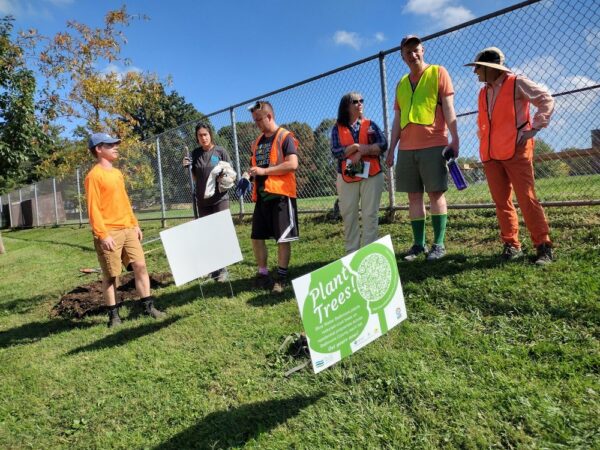
There seems to be less agreement about what to do with all those leaves when they fall. The simple answer is–as the meme says–“leave the leaves.” Leaf “litter,” as it is so inappropriately called, returns nutrients to the soil, insulates plant roots, and provides critical overwintering and nesting habitat for many species of beneficial insects, including bees, fireflies, many butterfly species, and beautiful moths such as the ethereal Luna moth.
We tend to think of insects only when we see them in their adult form in the warm months while giving little thought to how they get through the winter. Unlike the famous migrating monarch butterflies, most species hunker down for the winter out of sight as either a larva, pupa, or adult in leaf litter, under the soil, or in crevices and nooks and crannies. Many of them unfortunately get killed when we blast the leaves with blowers or put them in plastic bags and get rid of dead plant stalks. Mulching the leaves with a mower puts nutrients back in the soil but also kills the insects. Populations of insects, and birds who depend on them, have plummeted in the last 50 years. Our yard practices matter because there just isn’t enough habitat “out there” anymore.
Since I retired and am home during the week, I notice the lawn services with their noisy leaf blowers removing every leaf from some properties. I take out my hearing aids and ponder ways to spread the message about insects and leaf litter. If you have a thick carpet of leaves, especially Oak or Holly leaves that can take years to break down, consider ditching the leaf blower or lawn service and instead gently raking some of the leaves into your plant beds or into piles in a far corner of the yard–your “wild area.” Get the kids involved–like the group of kids I saw in my neighborhood today squealing with delight while making and jumping in “the world’s biggest leaf pile.”
I would like to add that seeing your yard as habitat instead of just “lawn” or “landscape” is incredibly fun and rewarding. For example, on my daily rounds in the yard the other day, I unexpectedly discovered a large yellow-green and pink caterpillar with horns on its backside crawling on the native Blackhaw Viburnum shrub. I took a photo and uploaded it to the iNaturalist app, which identified it as a Hummingbird Clearwing moth larva in its final instar before pupating in the soil just under leaf litter. I had seen the fascinating native Hummingbird Clearwing moth before, but never the caterpillar, which feeds on the leaves of a variety of trees. Since I had placed only mulch at the base of the shrub, I went off to gather leaves from under the Pin Oak tree in front. By the time I had completed this task, the caterpillar had disappeared! Hopefully it either found another plant to eat or successfully pupated and burrowed through the thin mulch layer (no “mulch volcanoes” in our yard!)
Many neighbors tell me that they leave at least some of their leaves and laugh about being “lazy gardeners.” If you are not a “lazy gardener,” I hope I’ve inspired you to think about leaves as habitat and allow at least some of your leaves to lie where they fall or gently rake them into your garden beds. You may even be inspired to leave seed heads of your flowers for the birds, spent stalks for bees to nest in, and a wood pile! In Spring and Summer when you see adult bees, butterflies, and maybe even a Hummingbird Clearwing moth, you will feel good knowing that you helped them.

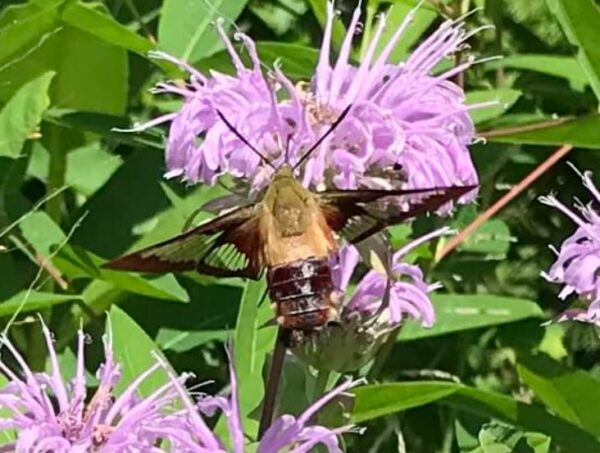
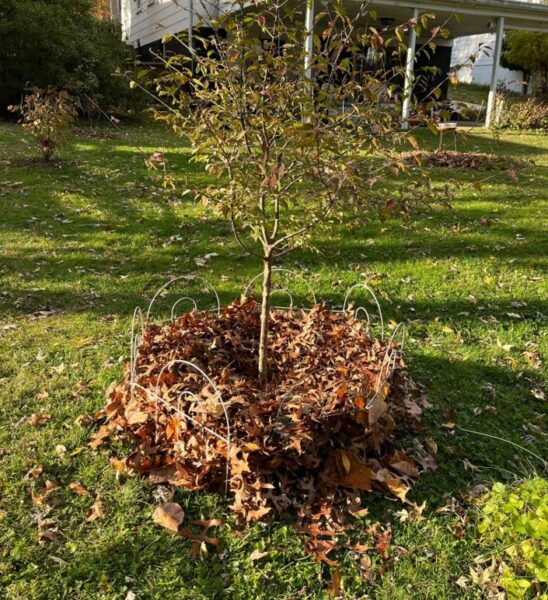
place to pupate and overwinter among the dry leaves.
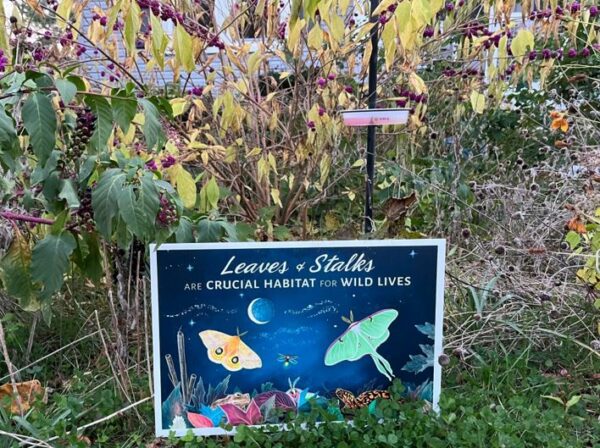
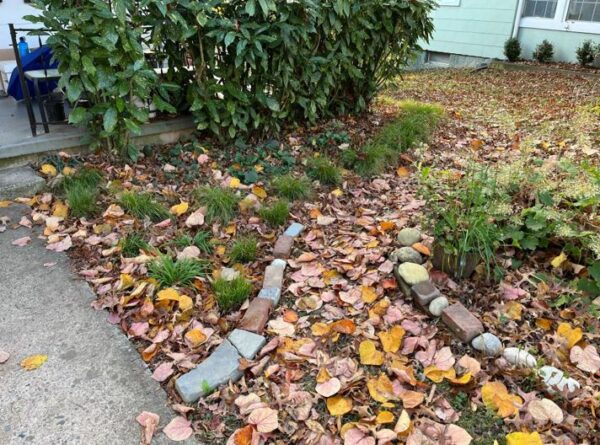


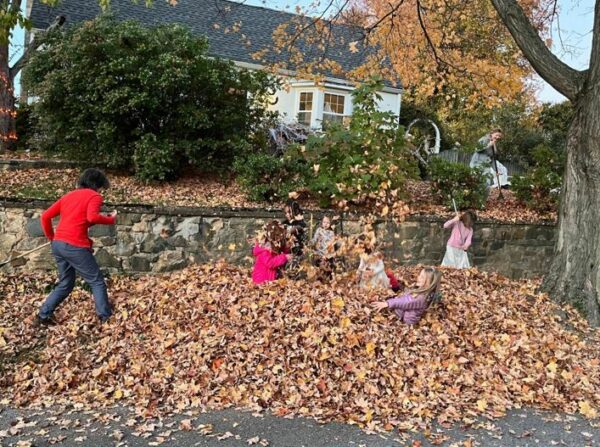
Adreon Hubbard is a Master Gardener, Master Naturalist, retired teacher, and a member of Green Towson Alliance. She has taken the photographs in this article.

